How to enable a program to be
placed anywhere in memory and
run correctly
- Let's consider a
simplified representation of the
computer system:
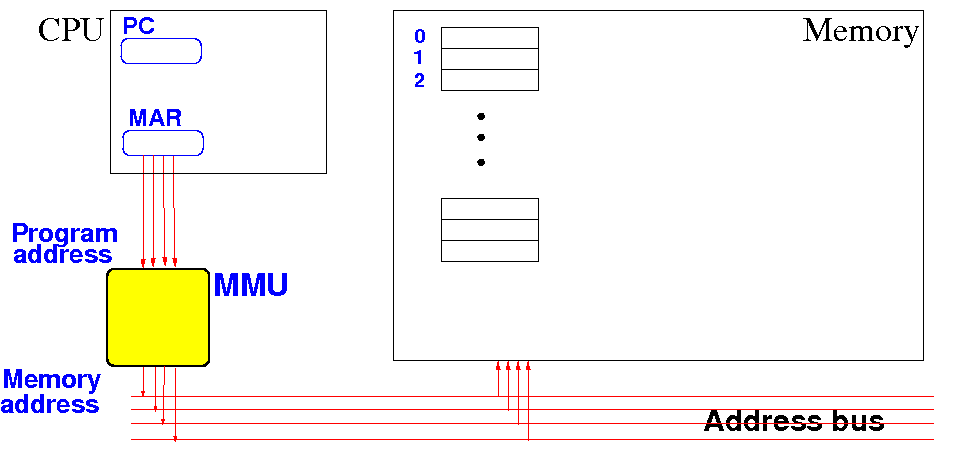
- I have
omitted the
(1) data bus,
(2) control bus and
(3) IO devices
because they are
not relevant in the
discussion
|
How to enable a program to be
placed anywhere in memory and
run correctly
-
suppose the
program is
placed in
memory
starting
starting at
memory address 0:

- The assembler has
allocated memory for
the variable x at
address 4000
|
How to enable a program to be
placed anywhere in memory and
run correctly
- The
"traditional"
computer system
(using the trivial
address mapping function)
is able to
execute this
program placement:
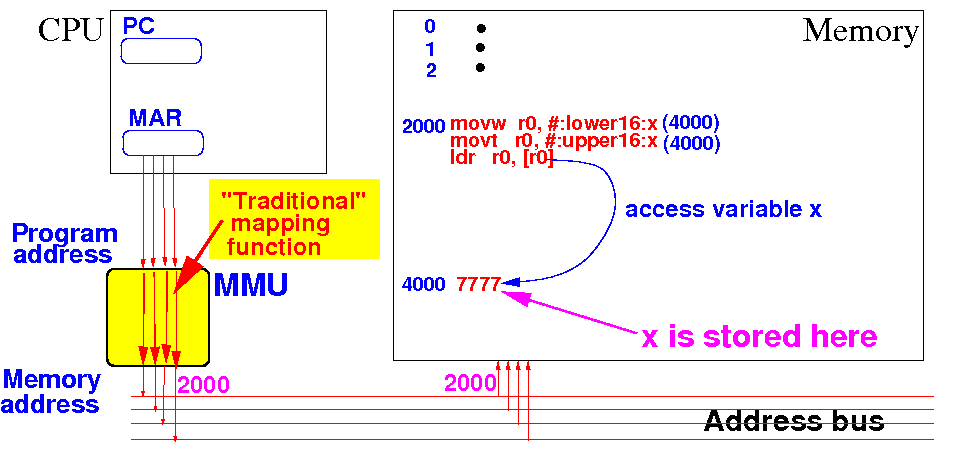
- The trivial
address mapping function is:
the
memory address = program address
I.e.: the
MMU
implements the
"pass through" function
|
How to enable a program to be
placed anywhere in memory and
run correctly
- (1) The CPU can
fetch the
program instruction from
the correct
memory location
Example: the CPU can
fetch the
correct instruction at
program address
2000:
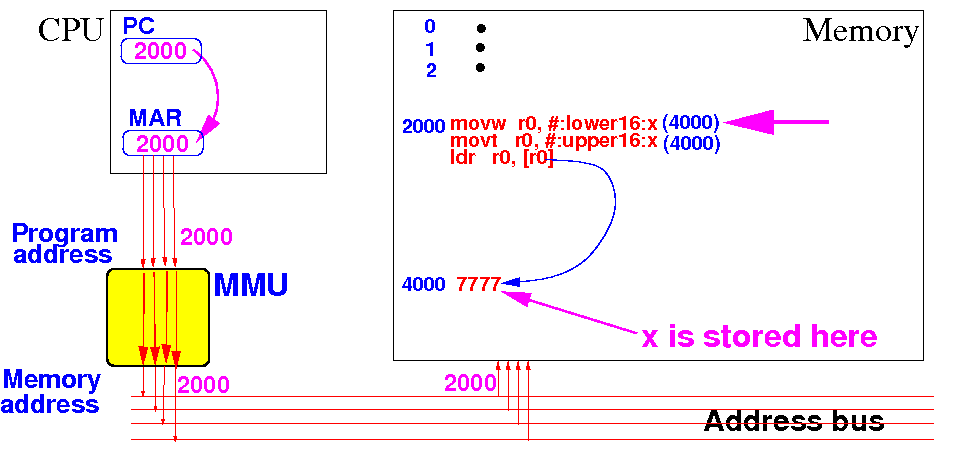
- When PC = 2000, the
CPU sends out
program address = 2000
Result:
MMU
sends out memory address = 2000
and fetches
program instruction @ 2000
|
How to enable a program to be
placed anywhere in memory and
run correctly
- (2) The CPU can
also
fetch an
operand (= variable) from
the correct
memory location
Example:
instruction
ldr r0,[r0]
will use the
correct variable
at
program address 4000:

- When the CPU
executes
ldr r0,[r0], the
CPU sends out
program address = 4000
Result:
MMU
sends out memory address = 4000
and fetches the
value @ 4000 (= x)
|
How to enable a program to be
placed anywhere in memory and
run correctly
-
Problem:
suppose a
program is
placed in
memory
starting
at
memory address
6000:

- For clarity,
I will also
include the
program address
in the
next figure....
|
How to enable a program to be
placed anywhere in memory and
run correctly
-
Problem:
can the CPU
execute the
program when it is
placed at
memory address 6000?
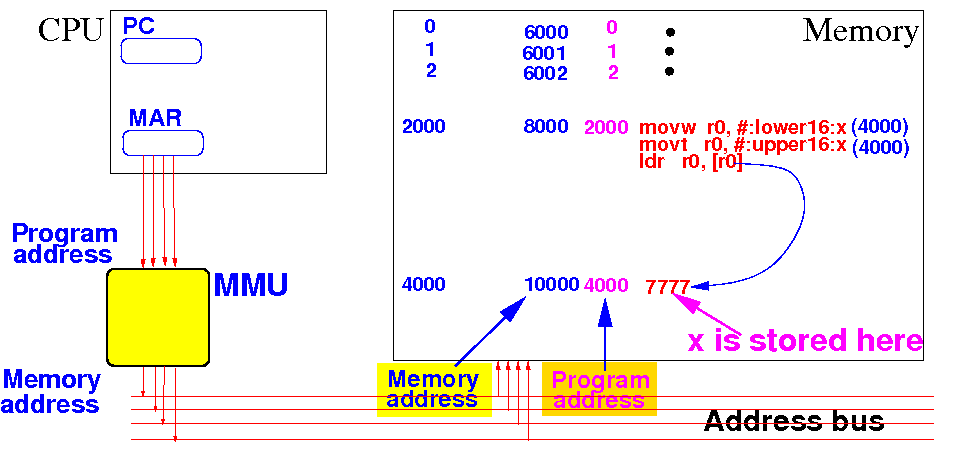
- Notice that
the
program addresses and
memory addresses are
not equal to each other !
|
How to enable a program to be
placed anywhere in memory and
run correctly
- The
"traditional"
computer system
(using the
address mapping
memory address
= program address)
will
not to
execute the program
correctly:
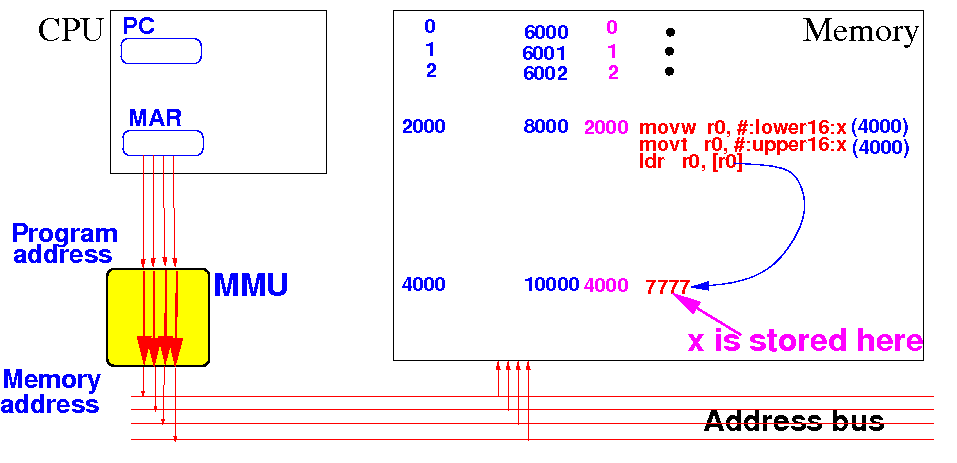
- E.g.: the
ldr r0, [r0] instruction
uses the
program address
4000 which
maps to
memory address
4000 --- BUT
the
correct
memory address
10000
|
How to enable a program to be
placed anywhere in memory and
run correctly
- Failure (1): the CPU will
fetch
program instructions from
the
wrong
memory location
Here's what happens when
the CPU
fetches the
instruction at
program address 2000:
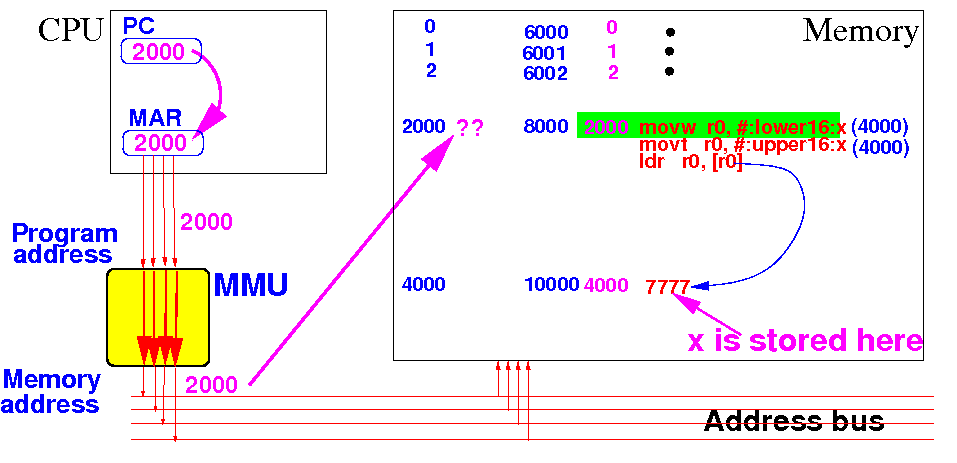
- When PC = 2000, the
CPU sends out
program address = 2000
Result:
MMU
sends out
memory address = 2000
but the
correct
memory address = 8000
|
How to enable a program to be
placed anywhere in memory and
run correctly
- Failure (2): the CPU
will
fetch
operands (= variables) from
the
wrong
memory location
Example:
instruction
ldr r0,[r0]
will use the
wrong variable
for
program address 4000:
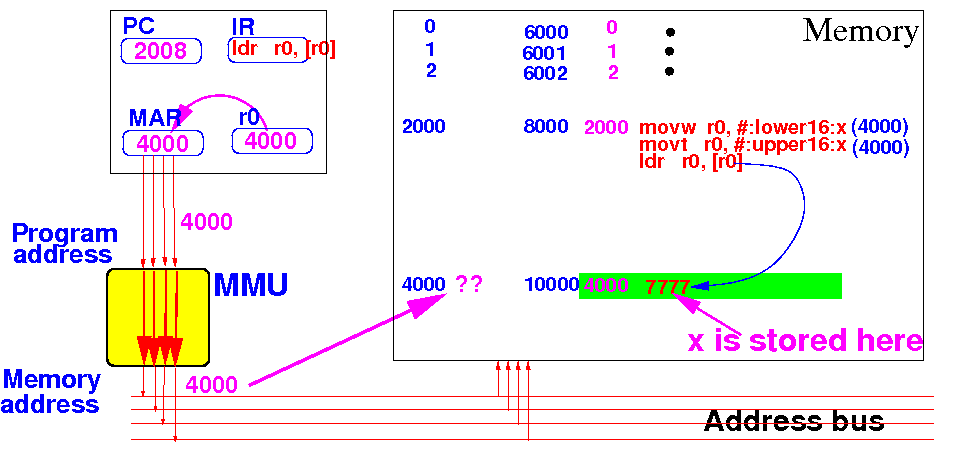
- When the CPU
executes
ldr r0,[r0], the
CPU sends out
program address = 4000 (=x)
Result:
MMU
sends out
memory address = 4000
but the
correct
memory address=10000
|
How to enable a program to be
placed anywhere in memory and
run correctly
- In order to for the
CPU to
execute a
program placed at a
NON-ZERO memory location,
we use a
mapping function
in the MMU:

- The mapping function
will transform each
(input) program address to
a memory address as:
memory address = f(program address) =
program address + 6000
|
How to enable a program to be
placed anywhere in memory and
run correctly
-
Suppose: we
use an
adder circuit in
the MMU and
create
the
mapping
Memory Address = Program Address
+ 6000:

- This MMU circuit
will transform each
(input) program address to
a memory address as:
memory address = program address
+ 6000
|
How to enable a program to be
placed anywhere in memory and
run correctly
- (1) The CPU can
now
fetch the
program instruction from
the correct
memory location
Example: the CPU can
fetch the
correct instruction at
program address
2000:
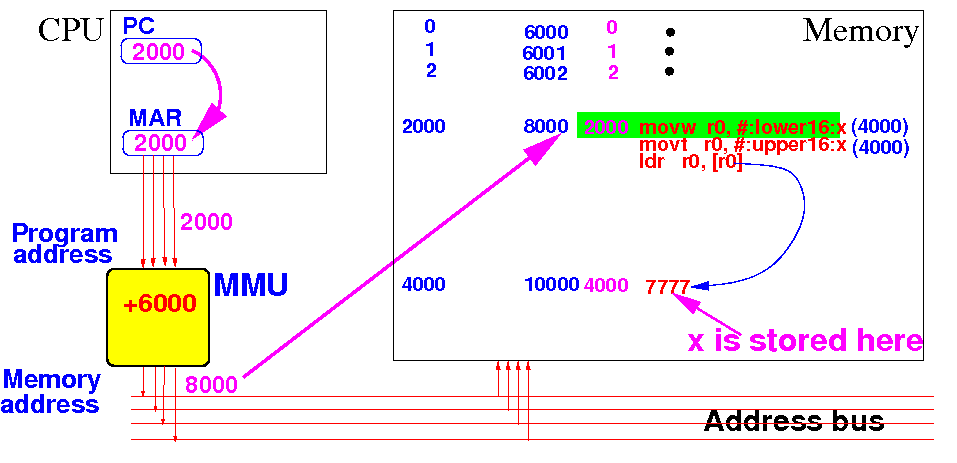
- When PC = 2000, the
CPU sends out
program address = 2000
Result:
MMU
sends out
memory address = 8000
and fetches the
correct
instruction
|
How to enable a program to be
placed anywhere in memory and
run correctly
- (2) The CPU can
also
fetch an
operand (= variable) from
the correct
memory location
Example:
instruction
ldr r0,[r0]
will use the
correct variable
at
program address 4000:

- When the CPU
executes
ldr r0,[r0], the
CPU sends out
program address = 4000
Result:
MMU
sends out
memory address = 10000
and fetches the
value @ 10000 (= x)
|
Weakness of this
simple address mapping technique
- The whole program
must be placed
in
consecutive memory locations:
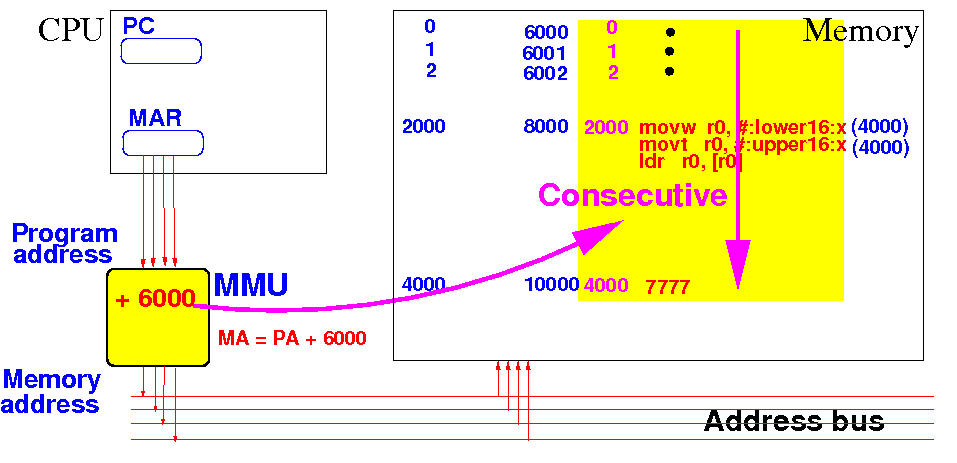
- This requirement is
not
flexible !!!
The
"paging"
technique
(discussed next) is
more powerful and
more flexible
|
❮
❯














